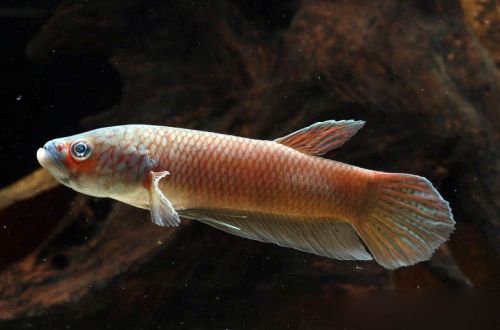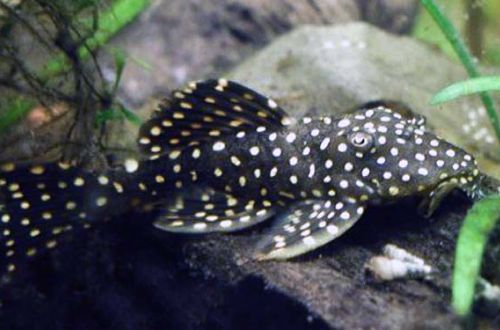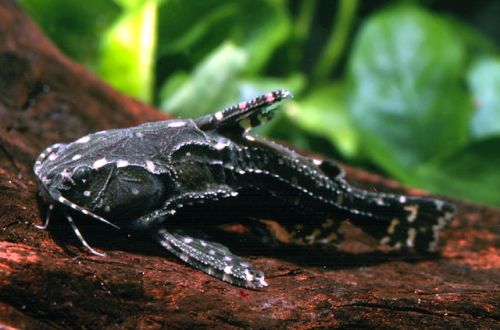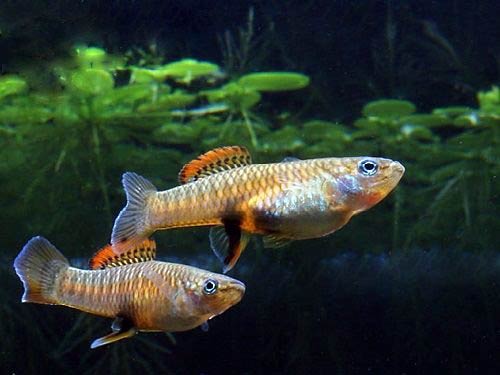
Brachyraphis rosena
Rosen’s brachiraphis, scientific name Brachyrhaphis roseni, belongs to the Poeciliidae (Peciliaceae) family. Bright moving fish with a difficult disposition. It is easy to keep, but breeding can be difficult, for this reason it is not as popular as other viviparous species.

Contents
Habitat
Comes from Central America. The natural habitat extends to the territory of Panama and Costa Rica. The region has mountain ranges and volcanic ranges. Abundant rainfall throughout the year contributed to the formation of a dense river network of numerous full-flowing rivers and streams flowing down the mountain slopes, cutting deep gorges into them. In nature, fish live in conditions of fast current, and the water has a high carbonate hardness. The substrates are rocky or sandy. Aquatic vegetation grows mainly along the banks.
Brief information:
- The volume of the aquarium – from 50 liters.
- Temperature – 22-28°C
- Value pH — 7.0–8.0
- Water hardness – soft to medium hard (5-15 dGH)
- Substrate type – any
- Lighting – moderate
- Brackish water – no
- Water movement – moderate
- The size of the fish is 4–6 cm.
- Food – any food
- Temperament – conditionally peaceful
- Keeping in a group of 5-6 individuals
Description
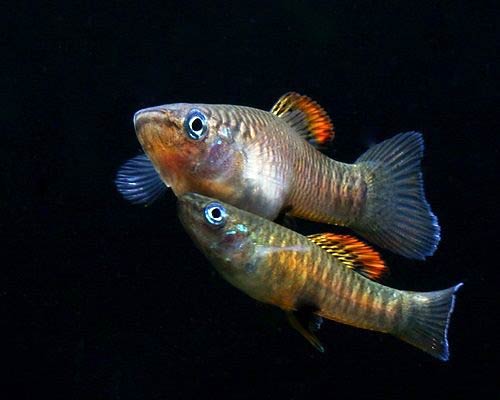
Females grow up to 6 cm in length. Males are noticeably smaller – about 4, an additional difference is the presence of the reproductive organ of the gonopodium and one dark mark on the abdomen (females have two). Otherwise, sexual dimorphism is weakly expressed. The fish have a variegated color of gray-yellow or orange. Scales with a blue tint. The dorsal fin and tail are red with black trim.
Food
Home aquariums will accept most dry, freeze-dried, frozen and live foods. The daily diet may consist of flakes, granules combined with brine shrimp, bloodworms, daphnia, mosquito larvae and similar products.
Maintenance and care, arrangement of aquariums
The optimal size of the aquarium for a flock of 5-6 fish starts from 50-60 liters. The design should include areas of open water for swimming and several shelters, for example, from snags, decorative objects, thickets of plants. The lower tier (bottom layer) does not matter much.
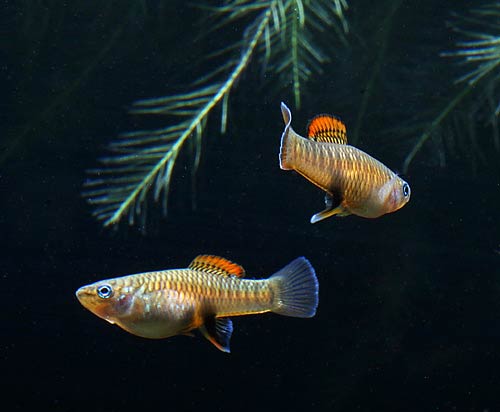
For long-term maintenance, high pH and GH values must be maintained. To this end, regular maintenance of the aquarium is carried out: weekly, part of the water is replaced with fresh water, which has the same hydrochemical composition; timely remove organic waste (feed leftovers, excrement) that can lower the pH; preventive maintenance of equipment, etc. The placement of a productive filtration system from internal filters will perform two tasks – in addition to water purification, an artificial current will be created that imitates the flows of mountain rivers in nature.
Behavior and Compatibility
Rosen’s brachiraphis has a more than simple disposition. It is necessary to maintain the number of flocks of at least 5-6 individuals. Males are not very friendly, and may show aggression towards smaller species, their relatives and females during the breeding season. You can reduce the excessive attention of males if there are 3-4 females per male, and there is a sufficient number of shelters in the aquarium.
This species lives mainly in the upper layers of the water. Most bottom fish, such as catfish, some chars, as well as fast tetras, small American cichlids and other species that can live in alkaline water, will do as tankmates.
Breeding / breeding
Refers to viviparous, in which there is no stage of eggs, and fully formed fry are born. It is generally accepted that such fish are very easy to breed, however, Rosen’s Brachiraphis is an exception. This species is extremely predatory towards its own offspring. In the closed space of the aquarium, the fry that appear are eaten in a matter of minutes. Even dense clusters of plants will not become a reliable shelter for juveniles.
In a number of sources, there are successful cases of breeding using special spawning chambers – this is a container made of transparent plastic with holes on the bottom and sides. The “ripened” female, when her abdomen noticeably increases, is transplanted into a separate tank with identical aquatic environment and placed in a container. During spawning, the fry swim out of the chamber through the holes and are safe. The female is then returned to the main tank.
Fish diseases
Finding the fish in a suitable habitat, getting them a balanced diet and free from external threats such as attacks from tankmates is the best guarantee against disease. The appearance of signs of illness can be a signal that there are problems in the content. Usually, bringing the habitat back to normal contributes to self-healing, but if the body of the fish has suffered too much, then medical treatment will be required. Read more about symptoms and treatments in the Aquarium Fish Diseases section.



